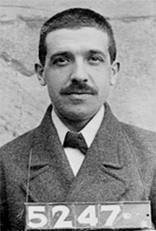Good 28º morning.
Yesterday we started frozen again, and topped at 72º.
Picture of the Day... Falcon nesting in a tree! LOL!(shared by my friend George Bachmeier .. LASD ret.)
Interesting about the U.S. Census....
March 1 is the anniversary of Congress passing the Census Act of 1790. President George Washington signed the law, which authorized the collection of population data by U.S. Marshals. Here are five things interesting facts about the U.S. Census.
The Census Has Been Taken Every 10 Years for a Long TimeThe government took the first census of the United States took place 1790, and was conducted by then Secretary of State Thomas Jefferson. At the time, no one had any idea what the population of the country was. The population count of the first 1790 census was 3,929,214, which is right around the current population of Oklahoma and about 1% of the US’s current population!
We Had a Census Before We Had a Census Office?Despite conducting a census every ten years starting in 1790, the US didn’t actually establish a Census Office until 1840. That’s right, it took 50 years to realize — maybe someone should actually be in charge of this massive undertaking. Congress passed the Census Act in 1840 which created the Census Office. . It wasn’t until 1902 that it became a permanent organization in the Department of the Interior. That didn’t last long though. Just one year later, in 1903, it was moved to the Department of Commerce and Labor.
Taking the Census Is Mandated in the U.S. ConstitutionYou can find the mandate to count the United States population every ten years in Article 1, Section 2 of the Constitution. Counting a country’s population is nothing new because the Chinese, Babylonians, Romans, and Egyptians conducted censuses, as did William the Conqueror in 1086. Censuses are even mentioned in the Bible. The United States was also the first country to constitutionally mandate a regular census and the first to use the census for apportioning political power. To this day, the number of seats each state holds in the House of Representatives depends entirely on census results
Federal Marshals Initially Performed The CensusIn addition to hunting down fugitives and placing people in witness protection, U.S. marshals were responsible for counting the number of inhabitants in their district. As result, they hired roughly 650 assistants for the first census in 1790 and sent them door-to-door. In 1879, enumerators replaced the U.S. Marshals trained for the job. Congress further professionalized the count in 1902 by creating a permanent government agency, the U.S. Census Bureau.
Many Records Were Lost Over The YearsNot all of the census records over the years are in existence, much to the frustration of genealogists and family historians. Scholars believe many of the early records from New Jersey, Virginia, Georgia, Delaware, Tennessee, and Kentucky were lost during the War of 1812 when the British burned Washington, D.C. More than 99 percent of the 1890 census records are also gone, the result of a 1921 fire at the Commerce Department.
These Cheddar Herb Potatoes are the perfect compliment to any main dish. They're a cinch to make and are just as good the next day!
- 3 large Idaho potatoes (or 5 medium), washed and peeled
- 3 fresh basil leaves, finely chopped
- 2 fresh chive blades, finely chopped
- 1 sprig rosemary, finely chopped
- 1 (10-3/4-ounce) can cream of mushroom soup
- 1/2 cup 1% milk
- 3 tablespoons butter
- 1/2 small white onion
- 1 cup shredded sharp Cheddar cheese, divided
- salt to taste
- Preheat oven to 350º. Coat a 9- x 13-inch baking dish with cooking spray.
- Slice potatoes 1/3-inch thick. In a large bowl, combine herbs, soup, milk, butter, onion, and 3/4 cup cheese.
- Line bottom of prepared baking dish with half the potatoes. Sprinkle with salt, then pour half the soup mixture over. Repeat layers. Sprinkle remaining cheese evenly over top.
- Bake covered 45 minutes, then uncover and bake 10 to 15 additional minutes, or until potatoes are fork-tender.
***If you don't have time to chop herbs, you can always use already prepared ones. It saves time and the flavor will still be excellent!
Historically this date.....
1776 – American Revolutionary War: The first amphibious landing of the United States Marine Corps begins the Battle of Nassau.
1845 – Florida is admitted as the 27th U.S. state.
1931 – The United States adopts The Star-Spangled Banner as its national anthem.
1991 – An amateur video captures the beating of Rodney King by Los Angeles police officers.
2005 – Steve Fossett becomes the first person to fly an airplane non-stop around the world solo without refueling.
And births this date include....
1847 – Alexander Graham Bell, Scottish-Canadian inventor (d. 1922)
1882 – Charles Ponzi, Italian criminal (d. 1949)
... ah ha! the ponzi scheme!
1911 – Jean Harlow, American actress (d. 1937)
1971 – Tyler Florence, American chef and author
All I know. Nuff said. Have a good Wednesday. Ciao.
xo Sue Mom Bobo
National Anthem Day commemorates the day the United States adopted “The Star Spangled Banner” as its National Anthem. Written by Francis Scott Key, the “Star Spangled Banner” became the National Anthem in 1931.
Oh Say Can You See Fort McHenry
The story behind “The Star Spangled Banner” is as moving as the anthem itself. While an attorney, Key was serving in the Georgetown Light Field Artillery during the War of 1812. In 1814, his negotiation skills as a lawyer were called upon to release Dr. William Beane, a prisoner on the British naval ship, Tonnant. Early in September, Key traveled to Baltimore in the company of Colonel John Skinner to begin negotiations.
While Key and Skinner secured Beane’s release, the British navy had begun attacking Baltimore. The trio waited at sea to return to Georgetown.

Fort McHenry is built on a peninsula of the Patapsco River. Just across the Northwest Branch is the city of Baltimore. In 1814, the population of Baltimore was roughly 50,000 people, hardly the metropolis it is today. The country itself was still young, and often families of soldiers lived nearby, providing support to their soldiers.
The Rocket’s Red Glare
The British navy abandoned Baltimore and turned their full attention to Fort McHenry on September 13th. As the 190-pound shells began to shake the fort, mother nature brought a storm of her own. Thunder and rain pelted the shore along with the bombs and shells. Throughout the night, parents, wives, and children in their homes could hear and feel the bomb blasts across the way. There were reports of the explosions being felt as far away as Philadelphia. It was a long night of fear, worry, and providing comfort to one another.
At sea, Key had a similar night. Being a religious man, one who believed the war could have been avoided, he watched the bombs bursting in air over the water and steadily pummeling Fort McHenry. It was undoubtedly a sight to behold.
 For 25 hours, the star-shaped fort manned by approximately 1,000 American soldiers endured over 1,500 cannon shots. The Fort answered with their own with almost no effect.
For 25 hours, the star-shaped fort manned by approximately 1,000 American soldiers endured over 1,500 cannon shots. The Fort answered with their own with almost no effect.Does that Star-Spangled Banner Yet Wave
In the early morning of September 14th, after Major George Armistead’s troops stopped the British landing party in a blaze of gunfire, the major ordered the oversized American flag raised in all its glory over Fort McHenry. Sewn a few months before by Mary Pickersgill and her daughter, the enormous banner replaced the storm flag, which had flown during battle.
As Key waited at sea for dawn to break and smoke to clear, imagine the inspiring sight in the silence of the morning to see his country’s flag fully unfurled against the breaking of the day and the fort standing firm. 

Key was so moved by the experience he immediately began penning the lyrics to a song which were later published by his brother-in-law as a poem titled “Defence of Fort M’Henry.”
HOW TO OBSERVE
Sing the Star Spangled Banner. Did you know there are three more verses to the original song? As a challenge, try learning them all.
NATIONAL ANTHEM DAY HISTORY
Nearly 117 years passed after Key penned “Defence of Fort M’Henry” before it became the national anthem of the United States of America. “Hail Columbia” and “My Country’ Tis of Thee” held honorary places as patriotic songs. But, the United States didn’t have an officially declared anthem until a congressional resolution, signed by President Herbert Hoover, until “The Star Spangled Banner” became the national anthem of the United States of America on March 3rd, 1931.
*Historical note: The spelling of “defence” in the original title of Key’s song is correct for the period.









